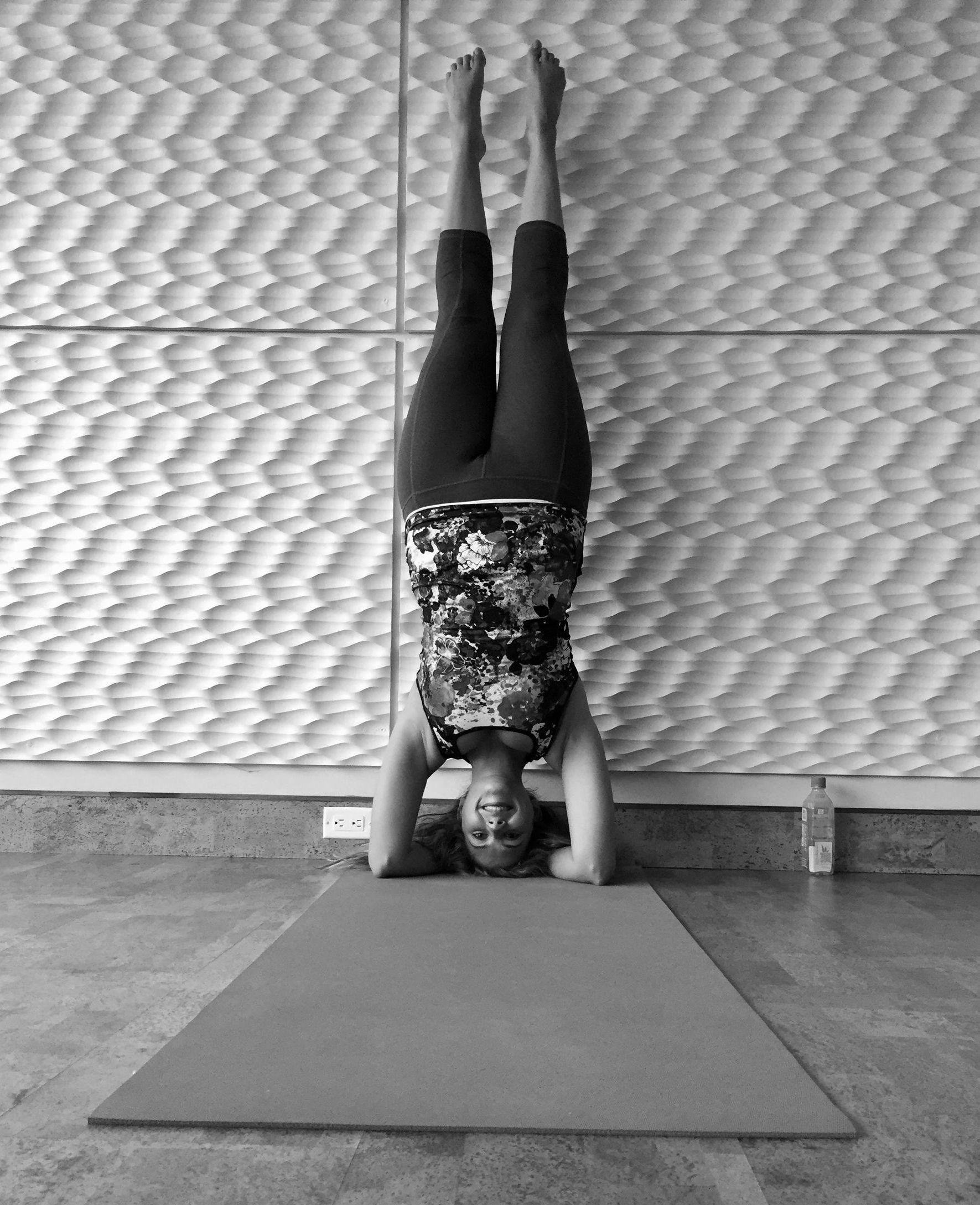12 Benefits of Yoga for the Mind, Body, & Soul
One of the biggest benefits of yoga is that it helps balance the autonomic nervous system. This system controls our heart, breath and, in fact, all functions that keep us alive and healthy.

What is yoga? Yoga is a mind and body practice that can build strength and flexibility. It may also help manage pain and reduce stress. Various styles of yoga combine physical postures, breathing techniques, and meditation. Here are 12 benefits of incorporating yoga into your lifestyle.
Yoga increases your flexibility.
This is why many people start yoga, and it's certainly a great benefit of a yoga practice. Yoga postures and sequences help to increase the body's range of motion. The mindful approach of yoga helps to ensure that stretching is done safely, allowing the nervous system to release the muscles into gentle, effective stretches. This reduces the risk of injuring ligaments and tendons, which can occur through more aggressive approaches to flexibility training. Releasing tension in the muscles can also help them to relax and let go, helping your body to open up more.
Poses to try: Reclined Big Toe Pose, Pigeon Pose, Eagle Pose
Yoga helps you to build strength.
Although many people overlook this one, seeing only yoga's benefits for flexibility, yoga is a fantastic strengthening practice. Yoga helps to strengthen the muscles that support the body's weight, leading to functional strength. It is also fantastic for building core strength. This improves athletic performance and your functionality in everyday life, while keeping you safe from injury.
Poses to try: Downward-Facing Dog, Chair Pose, Plank Pose, Dolphin Pose
Yoga improves balance.
Balance training is important at any age. Athletes find it can make them more powerful and those who are active find it can boost their workouts and level of fitness. Balance training improves posture and functionality to help you move more efficiently through everyday life. Exercises that strengthen and stabilize the core can promote agility and prevent accidents from stumbling or falling.
Poses to try: Chair Pose, Half-Moon Pose, Warrior Poses, Tree Pose.
Yoga improves your posture and body awareness.
One of the great things about the strengthening and stretching work of yoga is that it is a balancing practice. Yoga can help to address any muscular imbalances, lengthening tight areas and strengthening weak areas. Our posture can often deteriorate as we age, in a large part due to our habitual movement patterns during the day. It can also make you far more aware of your body and posture, so that you find yourself automatically self-correcting to come into a healthier alignment throughout the day.
Poses to try: Seated Twist Pose, Cobra Pose, Cat/Cow Pose, Side Plank, Lizard Pose, Crow Pose
Yoga helps to keep your joints healthy.
Yoga will strengthen the muscles around the joints, helping to stabilize them. By moving the joints in their full range of motion, yoga can help to promote better joint health. The mobilization of the joints improves the flow of synovial fluid, which lubricates them, allowing for smooth and healthy movement of the bones. Synovial fluid also delivers fresh oxygen and nutrients to the joint cartilage, helping to restore it and keep it healthy. Yoga can even help those with more serious joint problems such as arthritis, improving physical function and reducing pain.
Poses to try: Bridge Post, Mountain Pose, Child’s Pose, Crescent Lunge, Standing Forward Bend
Yoga is a powerful mindfulness practice.
It is about uniting the mind, body and breath. Yoga brings you into the present moment. Mindfulness has proven benefits for a whole range of health conditions, and is particularly effective in promoting positive mental health. In particular, mindfulness practices have been shown to strengthen the immune system, improve social relationships and reduce anxiety and depression. The benefits of increased mindfulness through yoga clearly reach far beyond the mat.
Poses to try: Triangle Pose, Pigeon Pose, Corpse Pose, Child’s Pose
Yoga reduces stress.
Many people begin yoga to improve their flexibility, but they keep coming back because it makes them feel much better. The focus, centering and breathing of yoga all help to reduce stress and can be the ideal antidote to a hectic modern lifestyle. In part, this is another wonderful benefit of the mindful aspect of yoga. It is also due to the positive impact of increasing activity levels and exercise, along with the relaxation and reduction of physical tension that yoga brings. Yoga can leave you feeling relaxed and refreshed - physically, mentally and energetically.
Poses to try: Standing Forward Bend, Thunderbolt Pose, Legs Up the Wall Pose
Yoga improves your sleep.
Yoga improves how quickly people fall asleep and how deeply they stay asleep. This is partly due to the aftereffects of exercise and the mental calming and stress relief provided by yoga specifically. In addition to improving anxiety, Yoga Nidra breathing is particularly helpful at improving sleep. It helps to calm the nervous system, especially if you’ve had a busy day or have a busy mind.
Poses to try: Happy Baby Pose, Legs Up the Wall Pose, Reclined Goddess Pose
Yoga lowers blood pressure.
Having high blood pressure is a serious medical condition, which is associated with increased risk of both heart attacks and strokes. Reducing stress through a yoga practice are thought to directly improve blood pressure. The relaxation and deep breathing of yoga can reduce high blood pressure even after the practice is finished.
Poses to try: Supported Bridge Pose, Legs Up the Wall Pose, Cobbler’s Pose, Happy Baby Pose, Savasana/Corpse Pose.
Yoga improves breathing.
The basis of a yoga practice lies in pranayama, or yogic breathing techniques. These techniques are integrated into the majority of yoga classes. They are beneficial in restoring balance to the body and mind. Controlled breathing increases energy levels while relaxing the muscles. This is helpful in reducing stress, anxiety, or depression. A regular yoga practice has been found to physiologically improve lung capacity.
After beginning my yoga practice, I haven’t had to take an inhaler for asthma since (it’s been 12 years).
Poses to try: Deep Belly Breathing, Alternate Nostril Breathing, Breath of Fire
Yoga encourages your body’s natural healing process.
The human body has the incredible ability to heal itself, given the appropriate conditions. Your yoga practice shines mindfulness on the immune system, increasing the body’s innate ability to fight disease and restore health.
Poses to try: Pigeon Pose, Garland Pose, Standing Forward Bend, Downward Dog, Lotus Position, Legs Up the Wall Pose
Yoga helps with burnout.
Burnout is the excessive exhaustion that effects one’s health, Currently, it is at an all-time high in society. Yoga helps significantly reduce the effects of burnout by improving interoceptive awareness. This is the ability to notice internal signals and respond appropriately – meaning yoga helps people become more in tune with, and even more likely to listen to their body’s signals.
Poses to try: Mountain Pose, Cat/Cow Pose, Child’s Pose, Easy Forward Fold Pose
Yoga helps support a balanced, active lifestyle. Always check with your doctor or healthcare practitioner if you have any health concerns when starting yoga.
It is a beautiful and gentle practice for all ages (literally children to seniors!)
Have you tried yoga? If so, what is your favourite pose?

Stay Connected!
All Rights Reserved | Sarah Parlett

















































































































